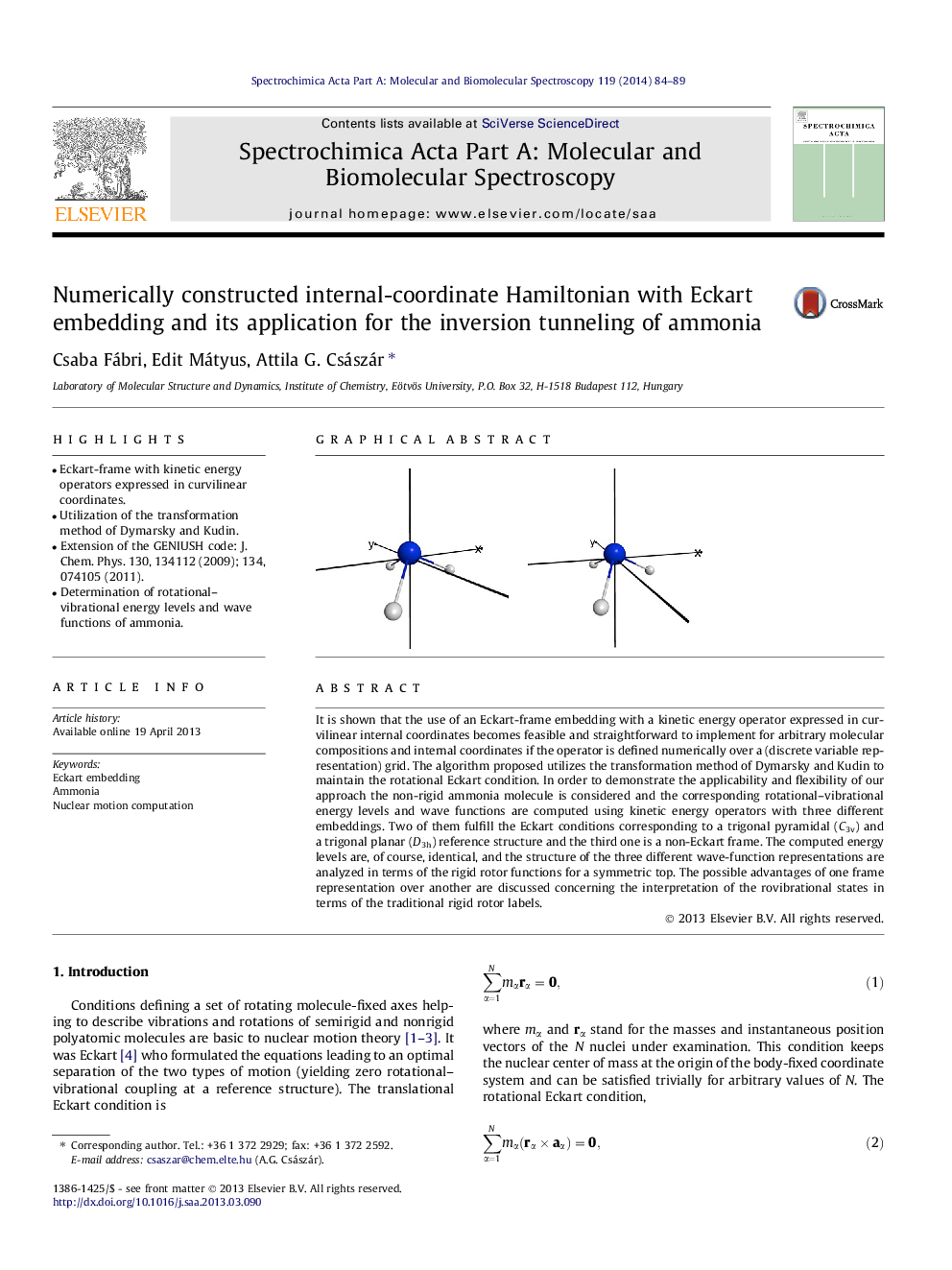| Article ID | Journal | Published Year | Pages | File Type |
|---|---|---|---|---|
| 1233089 | Spectrochimica Acta Part A: Molecular and Biomolecular Spectroscopy | 2014 | 6 Pages |
•Eckart-frame with kinetic energy operators expressed in curvilinear coordinates.•Utilization of the transformation method of Dymarsky and Kudin.•Extension of the GENIUSH code: J. Chem. Phys. 130, 134112 (2009); 134, 074105 (2011).•Determination of rotational–vibrational energy levels and wave functions of ammonia.
It is shown that the use of an Eckart-frame embedding with a kinetic energy operator expressed in curvilinear internal coordinates becomes feasible and straightforward to implement for arbitrary molecular compositions and internal coordinates if the operator is defined numerically over a (discrete variable representation) grid. The algorithm proposed utilizes the transformation method of Dymarsky and Kudin to maintain the rotational Eckart condition. In order to demonstrate the applicability and flexibility of our approach the non-rigid ammonia molecule is considered and the corresponding rotational–vibrational energy levels and wave functions are computed using kinetic energy operators with three different embeddings. Two of them fulfill the Eckart conditions corresponding to a trigonal pyramidal (C3v) and a trigonal planar (D3h) reference structure and the third one is a non-Eckart frame. The computed energy levels are, of course, identical, and the structure of the three different wave-function representations are analyzed in terms of the rigid rotor functions for a symmetric top. The possible advantages of one frame representation over another are discussed concerning the interpretation of the rovibrational states in terms of the traditional rigid rotor labels.
Graphical abstractFigure optionsDownload full-size imageDownload as PowerPoint slide
